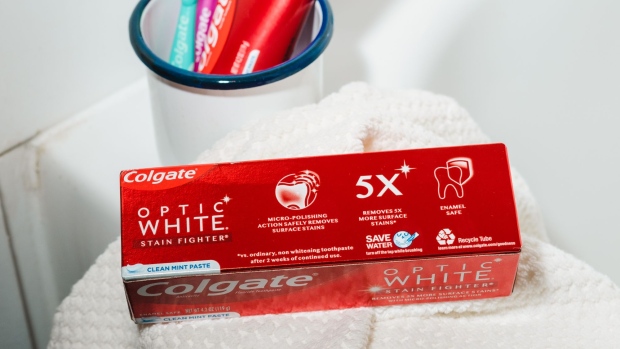Dec 9, 2022
Colgate’s 9 Billion Toothpaste Tubes Defy Effort to Recycle Them
, Bloomberg News

(Bloomberg) -- Colgate-Palmolive Co. spent years devising a recyclable toothpaste tube. Pulling it off was a technical masterstroke, substituting plastic for a mix of materials that was historically tough to reclaim. The result, one executive said, was “nice squeezability.”
One big problem remains: Many sorting centers around the US don’t accept them.
The gap between Colgate’s engineering success and the practicalities of where-do-we-toss-our-empties underscores a persistent challenge for corporate America: Switching to packaging that can bypass landfills isn’t enough if there is no easy way to recycle it. In Colgate’s case, that is 9 billion tubes a year requiring extra effort to avoid the trash heap.
The new tubes, which currently cover 78% of the company’s US toothpaste lineup, are made with HDPE, the recyclable plastic used for products such as milk jugs. But in the fragmented US system, companies making recyclable products have to persuade a wide range of stakeholders, from local governments to private companies, to accept the items, sort them and turn them into something new. It’s a process that can take years. The tubes still aren’t classified as recyclable by How2Recycle, an organization that issues standardized labels with instructions on how to dispose of packaging.
Goods eligible for collection vary by community, and an estimated 40 million households don’t have access to recycling services from their homes. This all means that plastics get reclaimed at rates of only 8% to 28%, depending on the type. In light of the challenge, Colgate said it has engaged players across the supply chain for years. It has also shared its new tube design with other companies and says competitors will adopt similar recyclable plastic tubes by 2025.
See also: World’s top plastics users likely to miss sustainability goals
“It is not easy work, given the many aspects of the process, but we are committed, and we believe we are on the right path,” Colgate said. The company has pledged to shrink its plastic waste and use “100% recyclable, reusable or compostable plastic packaging by 2025.” Sarah Dearman, chief innovation officer at the Recycling Partnership, an industry-funded group working to improve the system, said the new tubes are “a great step.”
But consumers must also have access to collection systems that accept the tube. It’s not clear how many do, according to a country-wide assessment by the Sustainable Packaging Coalition, an industry working group.
Colgate said the tube has a third-party certification showing it can be processed alongside HDPE bottles, which 87% of Americans can put in recycling bins. That type of plastic ends up being recycled nearly 30% of the time, one of the highest rates among recyclable materials in the US. However, Colgate says that acceptance may still be limited and advises consumers to check with local community programs. The company started updating the artwork on its boxes to provide more information.
Some consumers are taking note. Ethan Helvering, a tech worker living in Los Angeles, said he was looking for sustainable toothpaste alternatives when he stumbled upon Colgate’s new tube. He sees recyclability as a selling point and is glad to see the company’s efforts, though he has questions about what ultimately happens.
“If there’s an option to put something in the recycling, I’ll do it,” Helvering said. “Hopefully processes improve and at some point it becomes an actual reality.”
See also: ‘Zero waste’ stores are helping consumers cut back on plastic
Colgate’s new tubes usually get sorted to the correct group once they reach plants that recover materials and bundle similar plastics together, according to a test the company commissioned. But most US recovery facilities don’t take tubes because the recyclable and traditional versions are so similar, said Sandeep Kulkarni, a technical consultant at the Association of Plastic Recyclers, a trade group.
The old tubes could cause contamination if consumers put them in the recycling bin, he added, so it’s still easier for recycling facilities to reject toothpaste tubes across the board. Waste Management Inc., which offers recycling and disposal services, said the tubes aren’t in its list of acceptable items.
Another concern is leftover toothpaste causing contamination, said Pete Keller, an executive at waste disposal company Republic Services Inc. It’s another area that seems to have discrepancies: On its website, Colgate says any residual toothpaste in the tubes is removed during the rinsing process at recycling facilities.
Together, Waste Management and Republic Services run about a quarter of the US materials-recovery facilities tracked by the Recycling Partnership, which said processing capacity is also an important factor.
Sander Defruyt, who leads a plastics-reduction initiative at the Ellen MacArthur Foundation, said that given the challenges of recycling, companies should invest more in alternatives such as reusable containers and packaging. Colgate sells toothpaste tablets in glass bottles, but has said consumers are more likely to gravitate toward the tubes they’re used to.
If more companies that turn plastics into feedstocks for new products start accepting the tubes, then acceptance rates at recovery facilities could jump, according to Stina Inc., which leads a tube recyclability project funded in part by Colgate. That would encourage more municipalities to collect them. But first, a higher percentage of toothpaste tubes must have the right design, Stina said.
Colgate said that’s the plan — and reaching that critical mass helps explain why it made the design available to competitors. Companies representing 90% of the US toothpaste market have committed to making the switch by 2025, according to Colgate. For example, Procter & Gamble Co. in 2020 unveiled new recyclable packaging for its toothpaste brands, including Crest and Oral-B, and said it’s targeting full conversion in the US and Europe by 2025. The new tubes use HDPE plastic, P&G said.
Widespread adoption would be a “game changer,” said Stacey Luddy, a principal at Stina.
--With assistance from Rachel Adams-Heard.
©2022 Bloomberg L.P.


